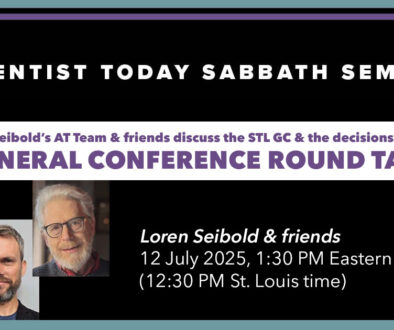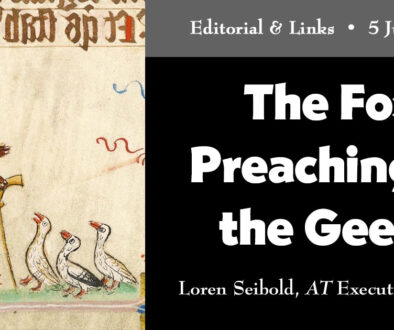Innovators: Churches of Refuge
By Debbonnaire Kovacs, July 12, 2017
In 2005, Ron Whitehead, Director of the Center for Youth Evangelism (CYE), Assistant Professor of Youth Ministry at Andrews University, and Director of Youth Ministry for Lake Union Conference, was talking with a group of soon-to-be graduates. They were sharing with him their frustration on the subject of finding a local congregation once they left school. They told him they didn’t want to go “church-hopping,” they wanted to find a church right away that valued their generation and understood their needs.
Whitehead and his colleagues wanted to know, in a larger context, what the felt needs of young adults were, when it came to churches. So they did something unexpected. Instead of creating a committee and sitting to decide from above what the young people needed, they asked them. They created a survey asking several hundred young adults what they were looking for in a local Adventist church, what would attract them, and what the churches could offer that would excite them about staying and being involved in the church and its work.
“At that time,” Whitehead told me, “nobody was asking. The response we tended to get when we talked to older church leaders was something like, ‘We survived it; they should survive it.’ Or “if they want to come, fine, if not, fine; they’re adults now…’”
The secular world, Whitehead pointed out, works hard to find out what people want and then attracts them, “just to sell them something! Why doesn’t the church seek to understand what their needs are and then adapt to meet them?”
From that survey came a list of nine core values.
- Sabbath: We are committed to providing a meaningful Sabbath experience.
- Discipleship: We are committed to discipleship through a personal relationship with Jesus Christ.
- Acceptance: We are committed to accepting people just as Jesus did.
- Community: We are committed to building community.
- Support: We are committed to supporting young adults with their life challenges.
- Service: We are committed to demonstrating God’s love through acts of service.
- Leadership: We are committed to young adult leadership.
- Budget: We are committed to investing money in young adult ministry.
- Change: We are committed to change that leads to improved young adult ministry.
This is the basic, streamlined list, but they are broader and deeper. Whitehead expounded on three of them for me. The first may surprise you. “They love the Sabbath. The whole thing, from Friday night to Saturday night, not just Sabbath morning. Our research shows that Friday night is the loneliest night for some of our observant Adventist young people. Their friends are partying or clubbing, but these kids have drawn a line, and they aren’t doing that on Sabbath. So it can get pretty lonely, especially if you’re in a public university or something. If the local churches don’t understand that, they’re missing some great opportunities. They love going to people’s houses on Friday nights.”
Number 9 was a big one, too—and might be one of the scariest for many churches. The young adults said they wanted churches which would be willing to change if it meant the kingdom of God would be benefited. Yep. Actually change…
Concerning #6, service, Whitehead said, “They don’t want to go to a church that prays for the poor, and talks about the poor, and sings about the poor. They want to go to a church that does something for the poor. And service means evangelism, too. They want to be involved. They want to help build the Kingdom of God and share Christ.”
Following the example of the Old Testament Cities of Refuge, “secure, conveniently located, inclusive, spiritual communities for individuals seeking a safe haven,” Whitehead and CYE came up with the term Churches of Refuge, (COR), “safe, friendly, accepting faith communities that welcome young people.”
They first intended to formalize the concept through the denominational structure, but “the young people told us not to. They wanted it to be more organic.” He went on to share that the Trans-European Division (CORe) and Inter-European Division iCOR have taken on the program, but their programs are more formally planned. They are part of the Youth Departments in those countries, though iCOR is specifically set up as an inter-generational program.
CYE created a paradigm for incorporating one’s church into the COR network. Basically, there are three steps: apply (which can be done online), then prayerfully incorporate all nine core values into the church’s ministries and programs, and finally, confirm that the church community has officially embraced the values. At that point, the church will be added to the network, which CYE will help to promote and make visible to young people seeking churches where they will feel welcome.
They make it very clear that there are no “rules” about exactly how churches implement these ministries. They will be varied, unique to their own environment. What matters is the heart—and that it’s seen and experienced by those it’s meant to reach.
Over the next several years, CYE made presentations about the new program. Some churches were already instinctively doing at least some of these things. Some jumped right on the bandwagon. (In fact, the very first certified COR will be the subject of next week’s feature: the Paw Paw Church in Michigan, which had already been informally calling itself a “church of refuge,” for reasons of its own.) Others took longer.
“New ideas take time to incubate,” Whitehead told me.

The movement has grown, and now there are many Churches of Refuge all over the world.
“Isn’t this why we gather?” Whitehead asked with passion in his voice. “Don’t we come together for healing, for realignment, for recalibration? Or are we just making a club, choosing which people to keep out and which can come in?”
And is this only for young people? “We’re targeting young adults,” Whitehead said, “but it’s the same felt needs everybody has.”
In fact, question number one on the website’s FAQ page is:
FAQ #1: If our church focuses on senior youth and young adults, will other age groups suffer?
First, focusing on this age range does not mean ignoring or neglecting other age groups. Second, it has been found that the entire church benefits as it focuses on the three COR areas—personal relationships, spiritual growth, and service to others. One example of a church that grew when focusing on young adults is shared in the Adventist Review article, “The Wausau Church Story.” COR is committed to inter-generational churches. To the whole family coming together.
That’s a program anyone can get behind. And this is only the beginning of the story. Watch this space for more features on churches which have been taken over and…yes, changed… by this new paradigm.
_____________________________________________
 Debbonnaire Kovacs is a speaker and the author of 28 books and over 700 stories and articles for adults and children. To learn more about her work or ask her to speak at your organization, visit www.debbonnaire.com.
Debbonnaire Kovacs is a speaker and the author of 28 books and over 700 stories and articles for adults and children. To learn more about her work or ask her to speak at your organization, visit www.debbonnaire.com.




